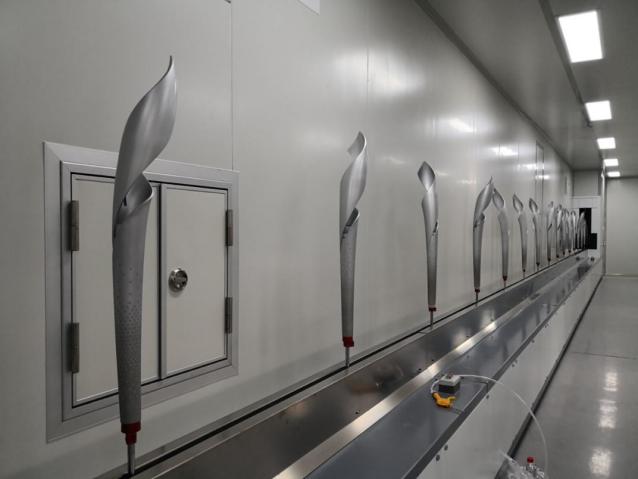At the opening ceremony of the Beijing 2022 Olympic, delicately-designed torches with shells in the shape of flying ribbons caught the eye of audience from all over the word. The shells are made of carbon fiber and the key manufacturing technology provider of the shells is a research team from Donghua University.
Prof. Sun Yize has been working on weaving equipment for nearly 20 years. In August and September of 2020, Sinopec Shanghai Petrochemical Co., LTD., the torch contractor, approached him and poseda challengeto his team - how to use carbon fiber composite materials to present the artistic shape of the torch ribbon with high precision.
The first hurdle to break through was mathematical modeling to complete the digital manufacturing, industrial production, and using high-tech carbon fiber composite for woven molding. To achieve that goal, Prof. Sun Yize worked with the torch shape designer team of the Central Academy of Fine Arts and the Winter Olympics Organizing Committee staff, and repeatedly discussed, modified, and polished the draft together. During the Spring Festival, the team members, led by Prof. Sun Yize, finally completed the mathematical modeling with a multi-dimensional surface fitting intelligent algorithm.

(The World's Largest 3D Spherical Weaving Machine)
As the torch ribbon is variable in diameter, curvature and inconsistent in the thickness of curved surface, the traditional manufacturing process was unable to meet manufacturing needs. Nevertheless, the world's first 3D high-precision spherical weaving machine for large-size anisotropic structural parts, developed exclusively by DHU, can not only weave large aircraft, high-speed rails and other large-size structural load-bearing parts, but also propellers, drones, torch ribbons and other precision-shaped structural parts. Moreover, it also has a total of 576 weaving spindles, which can weave a maximum cross-section of 500mm*500mm. It is currently the most versatile and largest 3D spherical weaving machine around the world.

(On-Site Guidance of Team Members for 3D Weaving Machine Use)


(Production Scene of Torch “Flying”at theCollaborator's Huai’anBase)
Prof. Sun led the team to work on the control algorithm, gauge-changing mechanism, etc. and worked from theoretical deduction to experimental verification to production practice. By repeated debugging, the so-called "eccentric" weaving method was invented, solving the problem of large curvature and variable density weaving. Besides, the original control algorithm for dual-robot cooperative grasping mandrel ensures the optimal dynamic performance of large-size shaped structural parts weaving under a complex state of stress. Meanwhile, the digital regulation and control technology of a single-end tension inwholeprocessmade precise constant-tension weaving possible, as well as the system of workplace robots for automatic grinding of high-dimensional surfaces. The project technology fills the gap in China and takes the leading position in the international arena.


